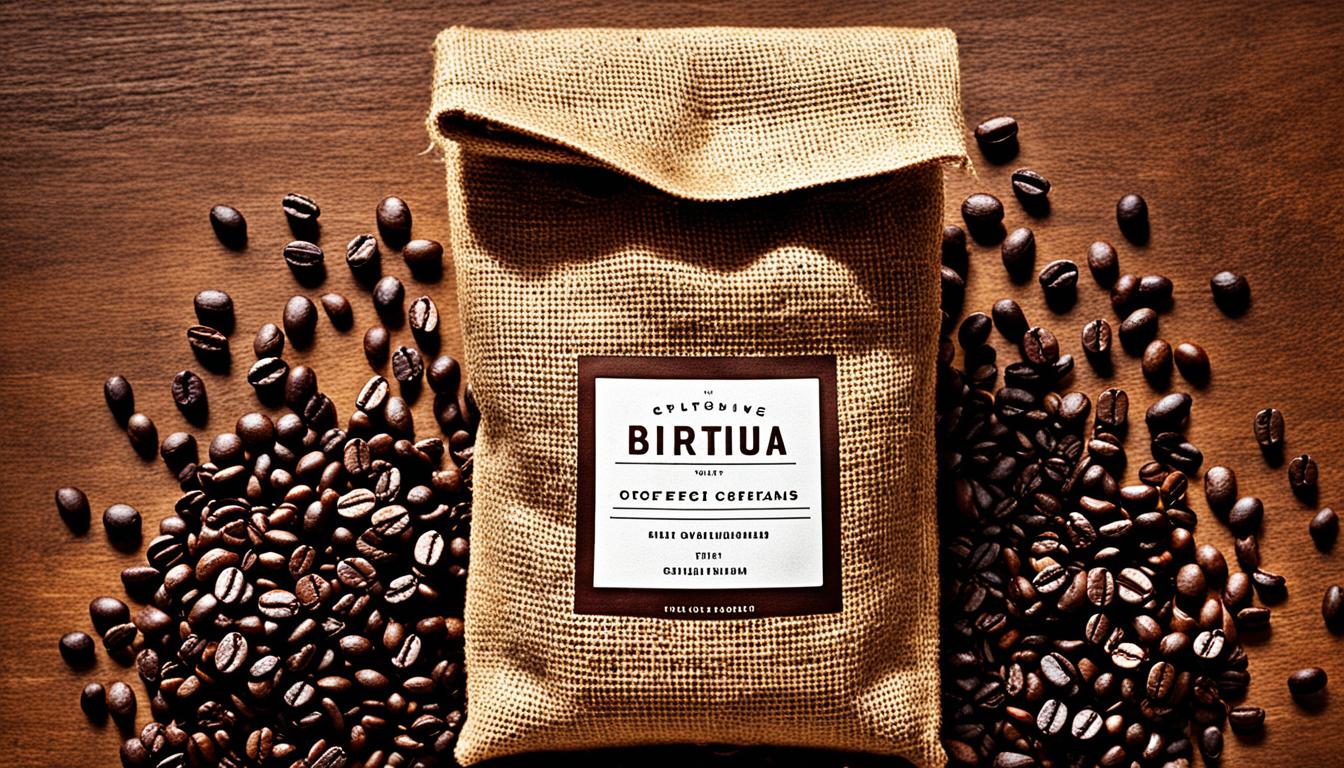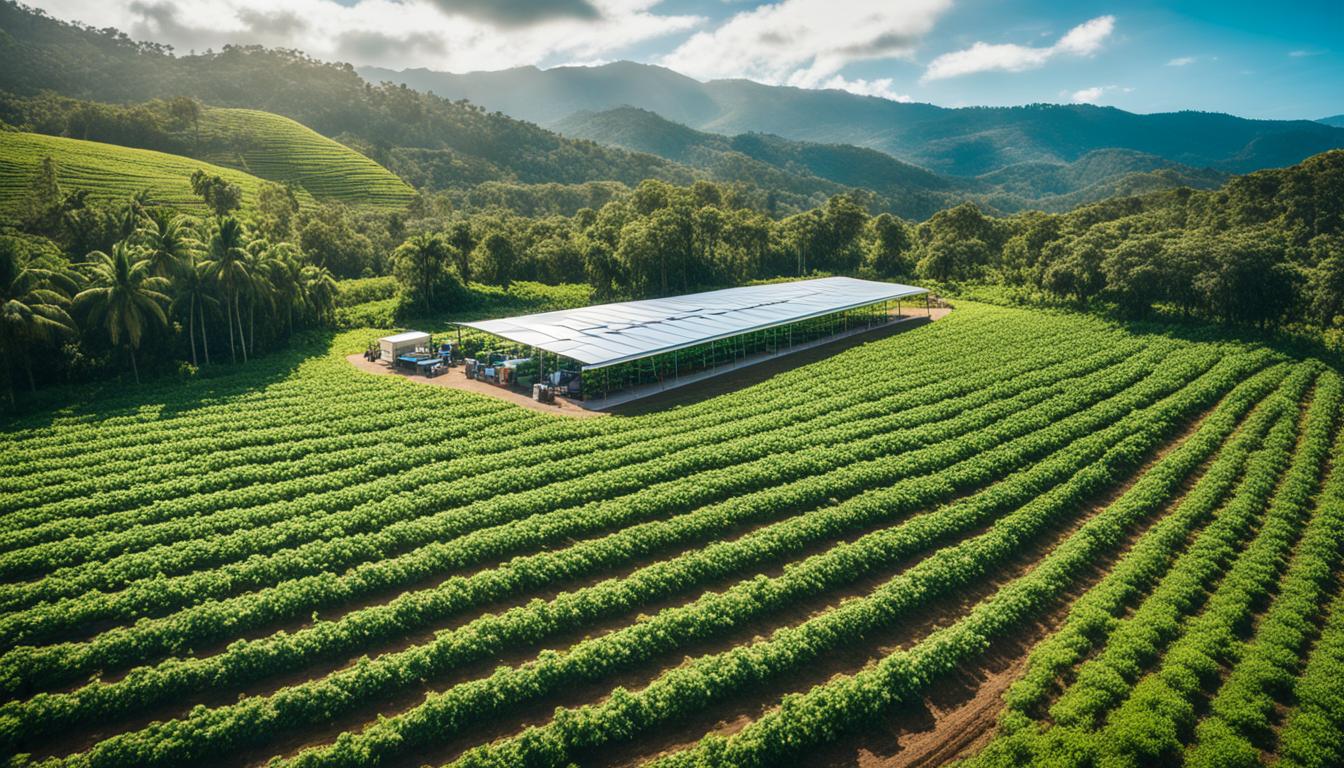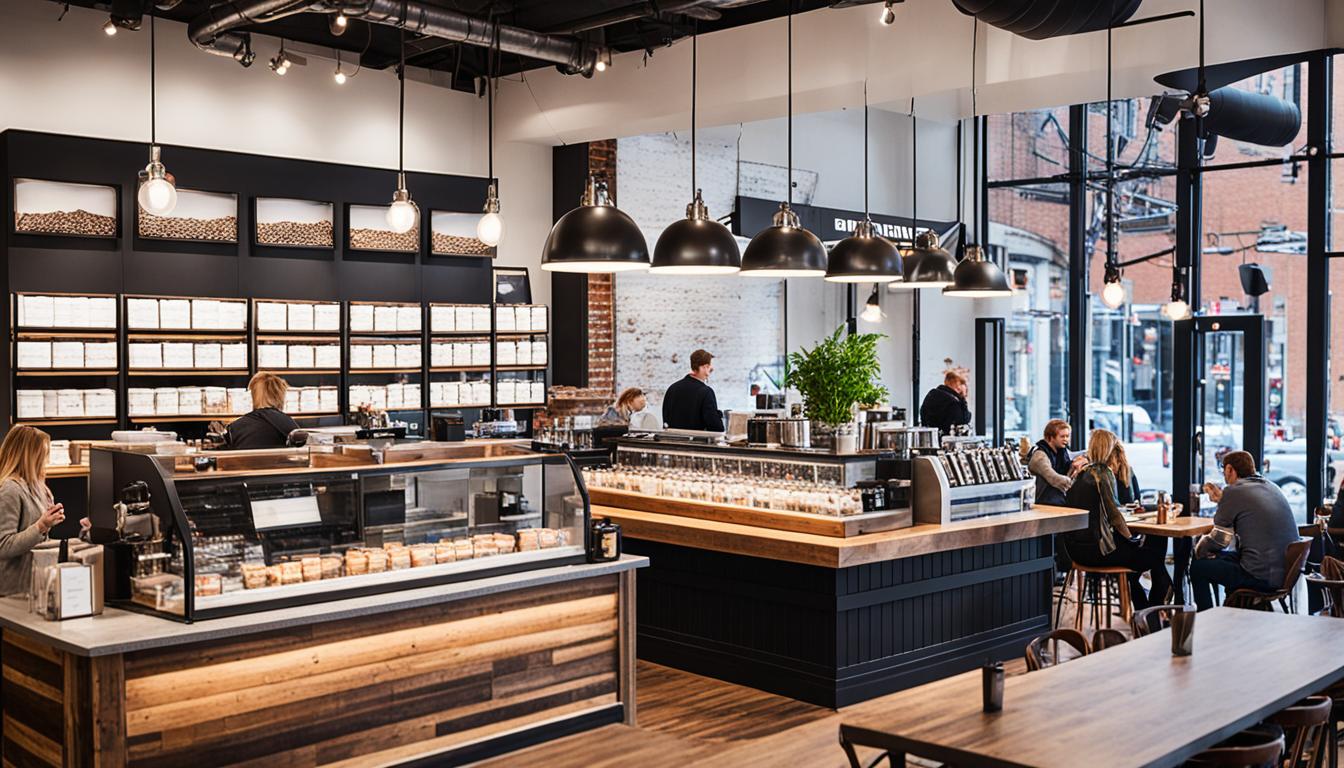Coffee is not just a morning ritual for many people, but it also plays a versatile role in culinary arts. From enhancing flavors in desserts to adding depth to savory dishes, coffee has become a popular ingredient in the culinary world. Barista techniques, coffee brewing methods, and coffee recipes have all contributed to the exploration and innovation of coffee in the culinary industry.
When it comes to coffee in culinary arts, there is a wide range of techniques to discover. From the art of coffee extraction to mastering latte art, baristas bring their expertise and creativity to create unique coffee experiences. Moreover, understanding the different coffee brewing methods is essential in bringing out the best flavors in each cup. Whether it’s pour-over, French press, or espresso, each brewing method brings its own distinctive characteristics to the coffee. This knowledge allows culinary artists to select the right coffee and brewing method for their recipes.
Coffee also offers an endless array of flavors and aromas that can be paired with various ingredients. Coffee tasting, or cupping, is a sensory evaluation that allows professionals to analyze the taste, aroma, and complexity of different coffee beans. This knowledge helps in creating harmonious flavor combinations with food. Additionally, coffee pairing involves matching specific coffee flavors with complementary ingredients to enhance the overall dining experience. From sweet pastries paired with a bold espresso to a hearty beef stew infused with the smoky notes of a dark roast, coffee pairing unlocks a world of culinary possibilities.
Not only is coffee used as an ingredient, but coffee roasting also plays a crucial role in the culinary industry. Specialty coffee roasters carefully select and roast coffee beans to unlock their full potential in terms of flavor and aroma. The beverage industry, including cafes and restaurants, relies on high-quality roasted coffee to create exceptional coffee-based beverages. This emphasis on specialty coffee has elevated the coffee experience and transformed it into an integral part of the culinary arts.
Key Takeaways:
- Coffee adds depth and complexity to culinary creations, both savory and sweet.
- Barista techniques and coffee brewing methods are important aspects of exploring coffee in culinary arts.
- Coffee tasting and pairing enhance the flavor profiles of dishes.
- Specialty coffee roasting contributes to the quality of beverages in the culinary industry.
- The beverage industry and culinary arts intersect through coffee, creating innovative and flavorful experiences.
Coffee in Savory Dishes: Marinades and Dry Rubs
Incorporating coffee into marinades and dry rubs can add a unique and complex flavor profile to dishes. Coffee’s rich and bold taste complements a variety of ingredients, elevating the overall taste of savory dishes. Whether you’re preparing meats, vegetables, or even tofu, coffee can add depth and enhance the flavors in unexpected ways.
For instance, a strong cup of coffee makes for an excellent marinade ingredient for pork chops. The coffee’s acidity and earthiness tenderize the meat while infusing it with a rich and aromatic flavor. Combined with complementary ingredients like garlic, soy sauce, and spices, coffee marinades create a bold and flavorful dish that will delight your taste buds.
If you prefer dry rubs, coffee grounds can be a game-changer. When used as part of a dry rub for steaks, coffee adds a depth of flavor that enhances the meat’s natural savoriness. The addition of coffee imbues the steak with a smoky and subtly bitter taste, accentuating the charred crust and creating a mouthwatering experience.
“Coffee grounds in a dry rub for steaks add a rich and smoky taste.”
Furthermore, culinary artists can experiment with coffee-infused recipes to create unique and exciting flavor combinations in their savory dishes. From coffee-rubbed chicken wings to coffee-glazed salmon, the possibilities are endless. By harnessing the deep and complex flavors of coffee, chefs can showcase their creativity and offer diners an unforgettable culinary journey.
Coffee-infused Marinades and Dry Rubs
| Recipe | Main Ingredient | Flavor Profile |
|---|---|---|
| Coffee-Marinated Pork Chops | Pork | Rich, bold, with a hint of bitterness |
| Coffee-Crusted Ribeye Steak | Beef | Smoky, robust, with a touch of bitterness |
| Coffee-Glazed Grilled Chicken Wings | Chicken | Sweet, tangy, with a subtle coffee undertone |
| Coffee-Spiced Roasted Vegetables | Assorted vegetables | Warm, earthy, with a complex flavor profile |
| Coffee-Infused Tofu Stir-Fry | Tofu | Savory, smoky, with a hint of bitterness |
“Coffee-infused marinades and dry rubs add a unique flavor profile to savory dishes.”
By exploring the world of coffee flavors in savory dishes, chefs and home cooks alike can transform ordinary meals into extraordinary culinary experiences. From the tenderizing properties of coffee marinades to the bold flavors of coffee-infused dry rubs, coffee offers a myriad of possibilities for elevating your savory creations.
Coffee in Desserts: Enhancing Flavors
Coffee is a popular ingredient in desserts, as it offers a deep and rich flavor that enhances the overall taste of the dish. From decadent cakes to creamy ice creams, coffee-infused desserts have become a delightful indulgence for coffee lovers.
One way to incorporate coffee into desserts is by adding a coffee reduction to the recipe. For example, a velvety chocolate mousse with a coffee reduction drizzle creates a symphony of flavors with the richness of the chocolate and the boldness of the coffee. The coffee reduction can be easily made by simmering brewed coffee until it reduces into a thick and concentrated syrup. This simple addition elevates the dessert to new heights and adds a unique twist.
Coffee can also be used to flavor cookies, providing a pleasant aroma and a distinct taste. For instance, adding a hint of freshly ground coffee to classic chocolate chip cookies gives them a subtle coffee undertone that enhances the overall sweetness. The combination of the chocolate and coffee creates a harmonious balance of flavors that is simply irresistible.

Moreover, coffee can be incorporated into frozen treats like ice cream or gelato, creating a luscious and creamy dessert experience. A scoop of coffee-infused ice cream can awaken the senses with its robust coffee flavor and creamy texture. Whether enjoyed on its own or paired with a warm slice of pie, coffee-infused ice cream is a delightful treat that satisfies any coffee craving.
To add a touch of elegance to cakes and pastries, espresso or brewed coffee can be added to the batter or used as a soaking syrup. This imparts a moist and fragrant quality to the dessert, making each bite a delight for the taste buds. Whether it’s a classic tiramisu or a coffee-infused sponge cake, coffee-based desserts never fail to impress.
Benefits of Using Coffee in Desserts
- Enhanced flavor: Coffee adds depth and richness to desserts, enhancing their overall taste and elevating the flavor profile.
- Versatility: Coffee can be used as both the star ingredient or as an enhancer, offering a wide range of possibilities for creating unique desserts.
- Indulgent experience: Coffee-infused desserts provide a luxurious and indulgent experience for coffee enthusiasts, satisfying their cravings and delighting their palates.
- Aroma: The aroma of coffee in desserts is enticing and inviting, creating anticipation and enhancing the overall sensory experience.
With its versatility and ability to enhance flavors, incorporating coffee into desserts is a great way to elevate your culinary creations and surprise your guests with delightful and indulgent treats.
Coffee in Culinary Businesses: Chefs and Cafes
Many talented chefs with a passion for coffee have taken their culinary expertise a step further by embracing the world of coffee businesses. Some have ventured into opening their own coffee shops, while others have incorporated coffee bars into their existing restaurants. By combining their love for food with their appreciation for coffee, these chef-owned cafes offer a unique and immersive culinary experience for coffee enthusiasts and foodies alike.
These coffee shops not only serve high-quality and freshly roasted beans but also provide a platform for chefs to showcase their skills and creativity using coffee as an ingredient. Customers can indulge in a variety of coffee-based drinks, from classic espresso-based beverages to innovative coffee-infused creations crafted by these culinary masters.
Moreover, chefs who open their own cafes can delve into the endless variations and narratives behind different coffee beans and growers. This allows them to curate a carefully selected menu that highlights the distinct flavors and characteristics of each coffee origin, giving customers a taste of the diverse and fascinating coffee world.
By venturing into coffee businesses, chefs can expand their culinary careers in exciting and innovative ways. The combination of culinary expertise and a deep understanding of coffee offers chefs new opportunities to create unique flavor experiences and explore the dynamic intersection of food and coffee.
Whether it’s a renowned chef opening a specialty coffee shop or an up-and-coming culinary talent launching a coffee bar, these chef-owned coffee businesses bring a touch of gastronomic excellence to the world of coffee. Customers can expect exceptional coffee, thoughtfully crafted dishes, and an unforgettable culinary journey.
With the rise of coffee culture and the growing demand for exceptional coffee experiences, chefs opening cafes have become a prominent and exciting trend in the culinary industry. These establishments not only showcase the chefs’ creativity but also provide a cozy and inviting space for coffee enthusiasts to indulge in their passion for both food and coffee.
| Chef-Owned Cafes | Location |
|---|---|
| Chef’s Table Coffee | New York City |
| Bean & Kitchen | San Francisco |
| The Roaster’s Table | Chicago |
| Cuisine & Coffee | Los Angeles |
These chef-owned cafes are not just ordinary coffee shops; they are culinary destinations where chefs unleash their creativity and passion for both coffee and food. Whether it’s a renowned chef bringing their Michelin-star expertise to the coffee scene or a rising talent showcasing their culinary skills, these cafes offer a unique and delightful experience for coffee lovers and food enthusiasts.
Conclusion
Coffee has become an integral part of the culinary arts, offering a world of flavors, techniques, and creativity for chefs and food enthusiasts alike. Whether it’s infusing coffee into savory marinades or enhancing the flavors of indulgent desserts, coffee brings depth, complexity, and an unforgettable taste to a wide range of recipes.
From the moment you take a sip of your morning brew, think beyond the comforting warmth. Consider the possibilities that coffee holds in the culinary world. Its rich flavors and diverse applications have made it a beloved ingredient among chefs, leading to the emergence of specialized cafes where coffee and culinary arts beautifully converge.
Through clever experimentation and exploration, culinary artists have discovered the profound impact that coffee can have on both traditional and innovative dishes. Whether it’s the boldness of a coffee-infused rub on a perfectly grilled steak or the decadence of a coffee-flavored dessert, coffee adds an enticing dimension to culinary creations.
So, whether you are a passionate home cook or a professional chef, embrace the versatility of coffee in your culinary journey. Try out new coffee-infused recipes, experiment with different coffee flavors, and explore innovative techniques to elevate your dishes to a new level of deliciousness. Let coffee be your muse in the culinary arts as you continue to savor its incredible taste and explore its endless possibilities.
FAQ
How can coffee be incorporated into savory dishes?
Coffee can be used in marinades and dry rubs to add a unique and complex flavor profile to dishes. For example, a strong cup of coffee can be used as a marinade ingredient for pork chops, creating a flavorful and tender meat. Coffee grounds can also be used in a dry rub for steaks, adding a rich and smoky taste.
In what ways can coffee enhance the flavors of desserts?
Coffee offers a deep and rich flavor that enhances the overall taste of desserts. For example, adding a coffee reduction to chocolate cookie dough can create a remarkably flavorful cookie. Coffee can also be incorporated into ice creams, cakes, and pastries, creating a delicious and indulgent dessert experience.
How are chefs incorporating coffee into their culinary businesses?
Many chefs have opened their own cafes or incorporated coffee bars into their existing restaurants. These cafes not only offer high-quality and freshly roasted beans, but also provide a platform for chefs to explore the endless variations and narratives behind different coffee beans and growers. By delving into the world of coffee, chefs can create unique flavor experiences for their customers and expand their culinary careers in exciting and innovative ways.
What role does coffee play in the culinary arts?
Coffee is a versatile ingredient in culinary arts, offering a range of flavors and techniques to explore. From savory dishes to indulgent desserts, coffee adds depth and complexity to recipes, creating a unique culinary experience. Additionally, chefs have embraced the world of coffee by opening their own cafes, further showcasing the endless possibilities and creativity that coffee brings to the culinary industry.
Is coffee a popular ingredient in culinary arts?
Yes, coffee is a beloved and popular ingredient in culinary arts. It is used in a variety of recipes, from marinades and dry rubs for savory dishes to enhancing the flavors of desserts. Its versatility and rich flavors make it an integral part of the culinary arts.




